Surfing Fuerteventura: 7 Reasons to Book Your Surf Trip in 2025
In this post, you’ll discover what makes surfing in Fuerteventura so special and why this European Island should be your next travel destination.
Affiliate Disclaimer: Some of the links in this post are affiliate links. with no extra costs for you View the disclosure for more information.
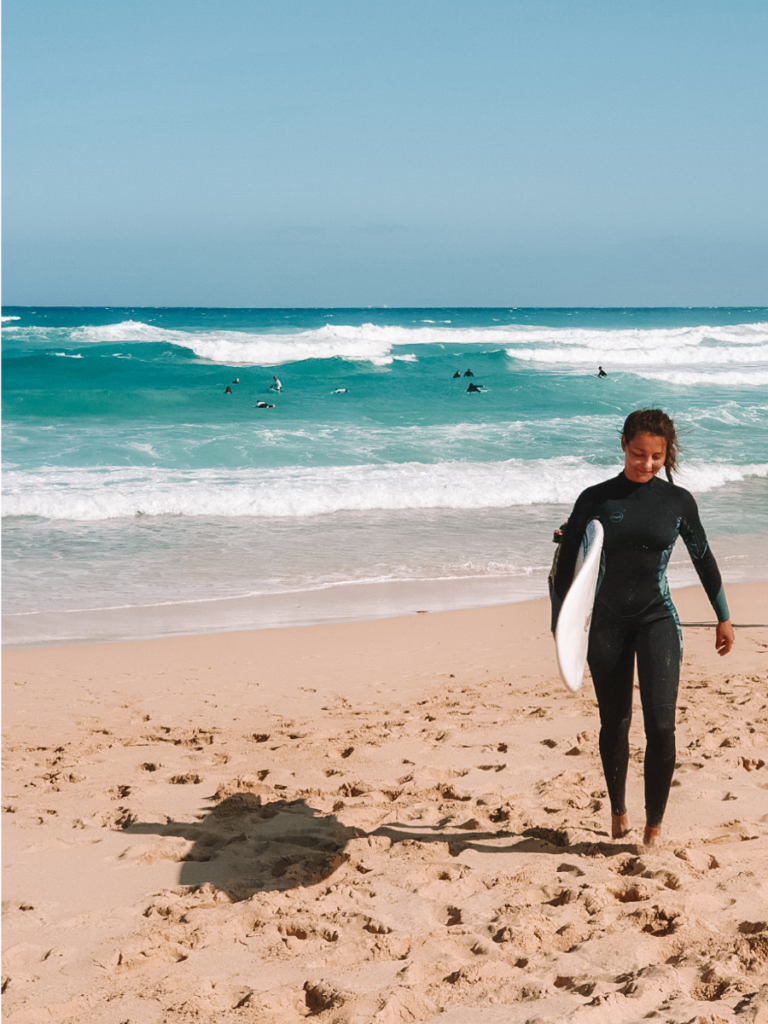
I have to admit, as a beginner surfer, Fuerteventura wasn’t even on my radar as a surf destination at first. After learning to surf in Bali and looking for European spots, my mind initially went to classics like France or Portugal. Fuerteventura, on the other hand, seemed more like a destination for all-inclusive vacations popular with older generations, which didn’t appeal to me at all.
But then fate stepped in. That summer, the surf camp I attended in France also offered a winter option in Fuerteventura. Since both camps operated in opposite seasons, it worked out perfectly. While still in France, I booked myself a spot at the surf camp in Fuerteventura for the winter.
When you surf, you see Fuerteventura, the “island of sand” through an entirely different lens. You barely cross paths with the all-inclusive holiday crowd because surfers tend to hang out in completely different spots. Today, Fuerteventura is one of my absolute favorite surf destinations in Europe. I’ve surfed there countless times and even completed part of my surf instructor training on the island.
I hope this guide inspires you for your next surf trip and gets you excited to ride the island’s perfect waves!
7 reasons why a surf trip to Fuerteventura is definitely worth it
1. The Island of Eternal Spring
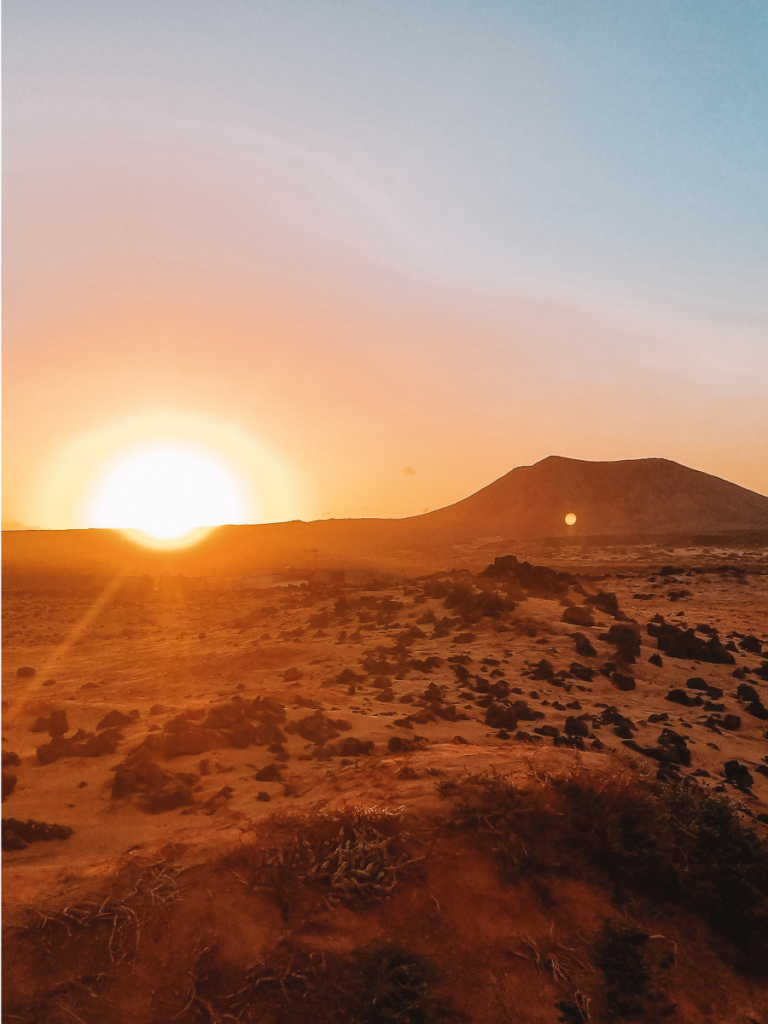

What could be better than escaping the cold winter months and vacationing under palm trees? That’s exactly what Fuerteventura offers. The island boasts spring-like to summer-like weather year-round, with plenty of sunshine. January, the “coldest” month, still has an average temperature of 20°C. How warm it feels during winter often depends on the wind. If it gets breezy, it’s a good idea to throw on a sweater – especially after your surf sessions! Otherwise, you’ll probably find yourself in light clothing during the day.
Water temperatures in winter hover around 19-21°C, making Fuerteventura perfect for surfing. A 2/3 wetsuit is usually sufficient, and in October and November, you’ll even see some surfers in boardshorts or swimsuits – although I’d say that only works if you’re not particularly sensitive to the cold 🙂
Fuerteventura is one of my favorite winter surf destinations. If you’re looking for more travel inspiration, check out this article.
2. Perfect Waves During the Winter Months
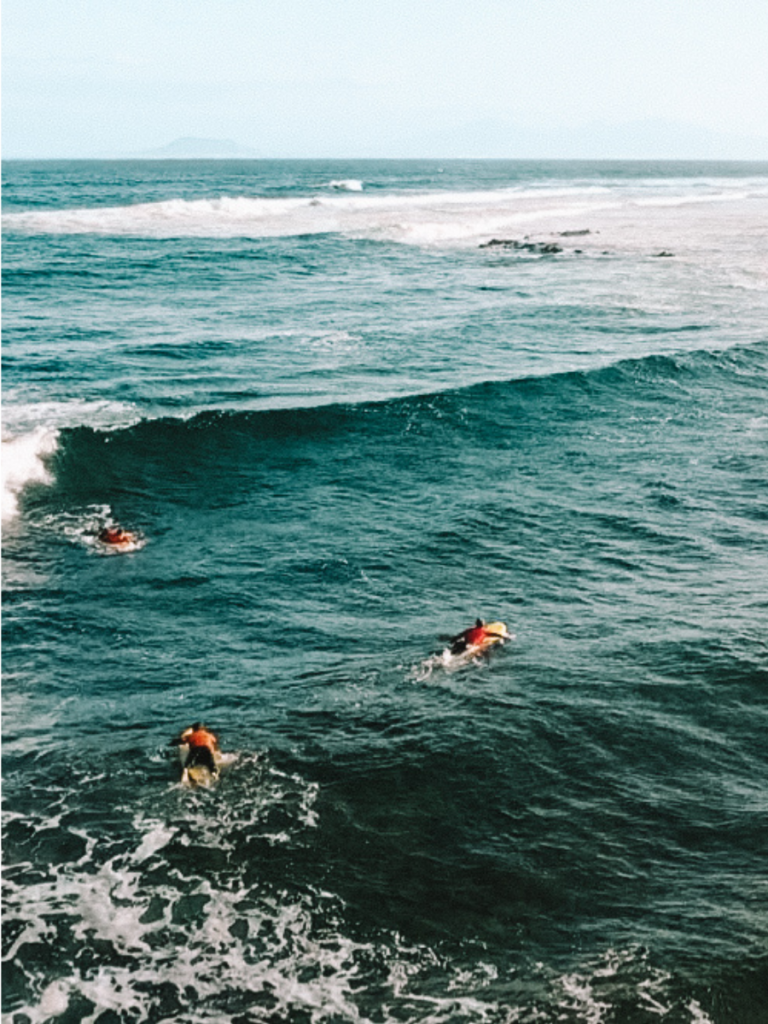

The surf season in Fuerteventura runs from October to April, making it the perfect winter getaway. During this time, consistent swells roll in, while the summer often brings fewer waves and stronger winds – a paradise for windsurfers rather than wave riders. Thanks to its geographical location, the island has spots that work almost all the time, regardless of the swell and wind direction.
For beginners or intermediates, it’s crucial not to explore the surf spots alone. Local knowledge or a guide is essential to find the right spot based on the swell and wind direction. Currents and the seabed are often hard to identify from the shore.
Fuerteventura offers a wide variety of surf spots, including both reef and beach breaks. The beach breaks at El Cotillo and the eastern coast near Corralejo are perfect for beginners. However, the famous North Shore, with its countless dreamy point breaks, isn’t just for the pros. Advanced beginners and intermediates can also enjoy spots here, like Punta Blanca (also known as “Maryland”), which offers areas suitable for every skill level.
Another highlight of Surfing in Fuerteventura is the renowned right-hand wave near Los Lobos island. However, this spot is only recommended for experienced surfers. At more advanced spots without surf schools, it’s important to follow priority rules and the “Respect the Locals” principle to avoid conflicts in the lineup. Guides can help you understand these rules and ensure you stay safe in the water.
If you head out into the waves on your own, make sure not to overestimate your abilities or tackle conditions beyond your skill level. The seabed and currents, especially along the North Shore, can be treacherous! This also includes choosing a surfboard appropriate for your level. Unfortunately, it’s common to see surfers using boards that are far too small.
The wide range of surf spots and the flexibility to find the right wave size by choosing the perfect spot make surfing in Fuerteventura an ideal surf trip for any skill level.
Are you a beginner? Then make sure to check out my top tips in this article before you hit the water!
3. Easy Travel Access
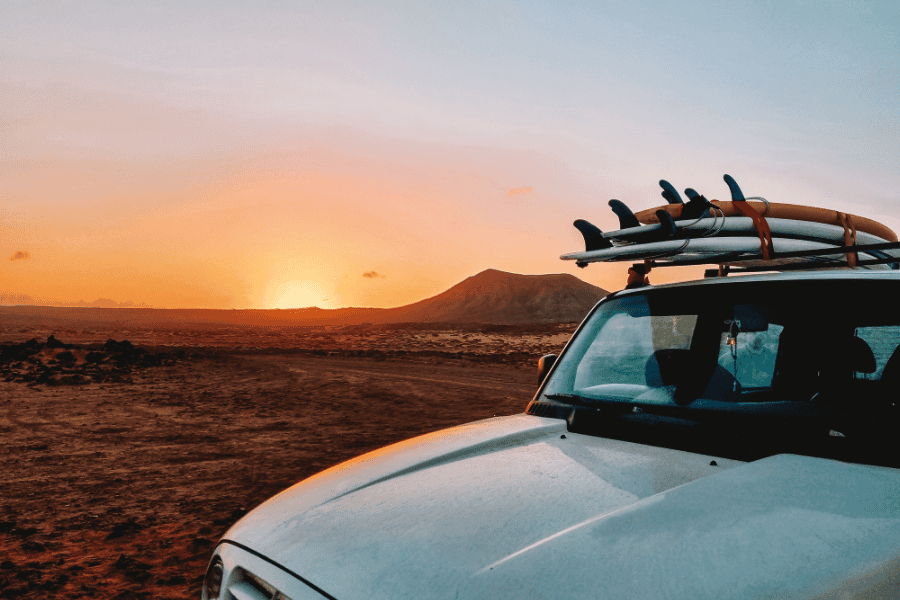
Getting to Fuerteventura from within Europe is straightforward. Numerous airlines offer direct flights from bigger cities of Europe, with a flight time of about 4 to 5 hours depending on your departure city. Bringing a surfboard is usually hassle-free as well. For example, Ryanair currently charges around €55 for sports equipment. I often travel without an extra suitcase and pack my clothes directly into my board bag.
Once you arrive at the international airport, it’s only about a 30-minute drive to Corralejo – the most popular spot for surfers on the island. Here, you’ll find the majority of surf camps, schools, and a wide range of accommodations, restaurants, and bars. Many surf camps offer a shuttle service for your convinience.
If a shuttle isn’t available or you want to save money on a taxi, bus line 6 takes you directly into town. A ticket currently costs €3.40 (as of December 2024). However, it’s important to check the bus schedule in advance to ensure you catch a suitable bus. You can find the timetable under: Bus Line 6.
Alternatively, you can travel with your own car or camper and take the ferry from mainland Spain. However, a one-way trip can cost several hundred euros. This option is only worthwhile if you’re staying for several months and plan to sleep in your vehicle to save on accommodation costs.
Tip:
If you want to explore the island during your surf trip, there are plenty of car rental options. Be aware, though, that driving along the North Shore is usually not covered by insurance and may even be prohibited. If your car breaks down in this area, you can’t rely on the rental company and will have to cover all costs yourself. If you plan to drive daily to surf spots along the North Shore, discuss this with the rental company beforehand.
This is one of the main reasons why I prefer to surf with a guide or through a surf school – transportation to the spots is included, allowing you to enjoy the best waves stress-free.
4. Plenty of Charming Towns to Choose From
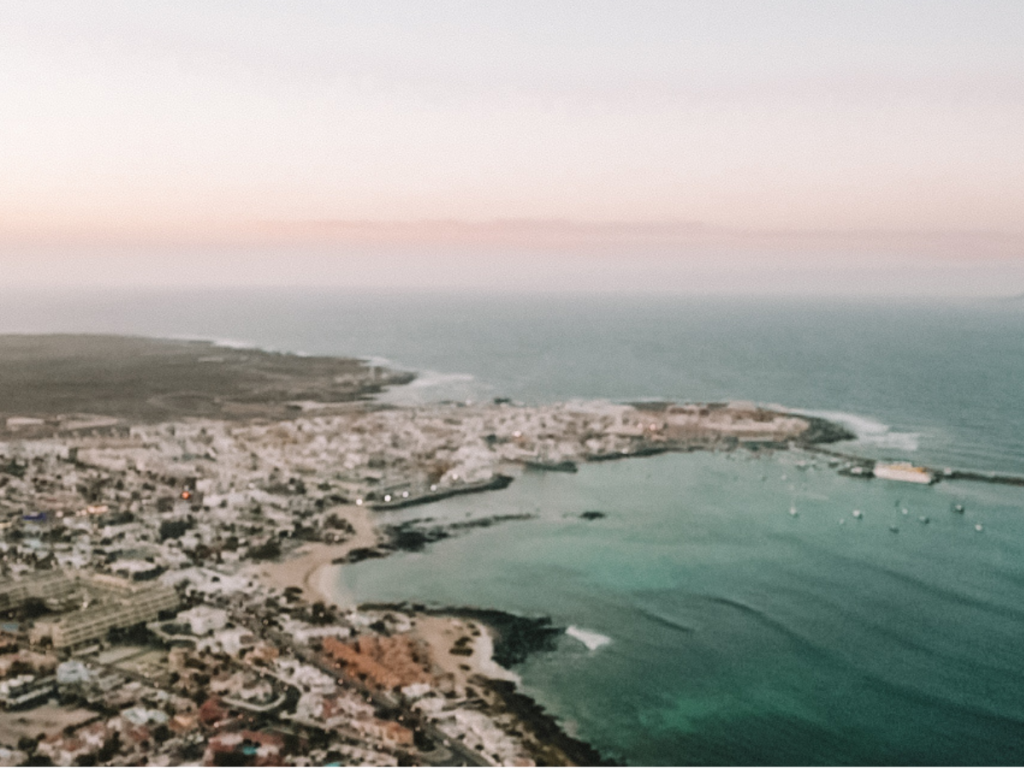

Fuerteventura, the second-largest of the Canary Islands, offers a variety of places to stay. If surfing is your priority, Corralejo in the north is the best option. It boasts the best surfer infrastructure: numerous accommodations, surf schools, restaurants, bars, and shops. Additionally, Corralejo is an excellent base for activities like trips to Lanzarote, Los Lobos Island, or hiking adventures.
For a quieter alternative, El Cotillo in the west is a fantastic choice. It’s far more laid-back while still offering excellent access to surf spots. El Cotillo is ideal for those looking to escape the crowds yet stay close to world-class waves.
Another option is the small town of Lajares, located between Corralejo and El Cotillo. It’s geographically convenient for reaching surf spots, though you’ll need to forgo beachfront accommodations here.
5. Budget-Friendly


Surfing in Fuerteventura is budget-friendly, comparable to destinations like Portugal or mainland Spain. Supermarket prices are noticeably lower due to the island’s unique taxation system, known as ZEC (Zona Especial Canaria). Instead of the mainland’s standard 21% VAT, only 7% applies to products and services.
Dining out is also affordable, with reasonably priced drinks and restaurants offering excellent value for money, depending on your taste.
Fuerteventura caters to all budgets, from simple accommodations to 5-star resorts and luxury villas. Surf camps are priced similarly to other Southern European regions, but keep in mind that popular spots like Corralejo and El Cotillo tend to book up quickly. Strict regulations on the island limit the number of surf hostels and holiday rentals, so planning ahead is essential to secure the best options.
Surf Camp Recommendations: Wellenreiter (german), Nomad Surf Camp, Rapa Nui Surfcamp
6. Activities & Culinary Highlights

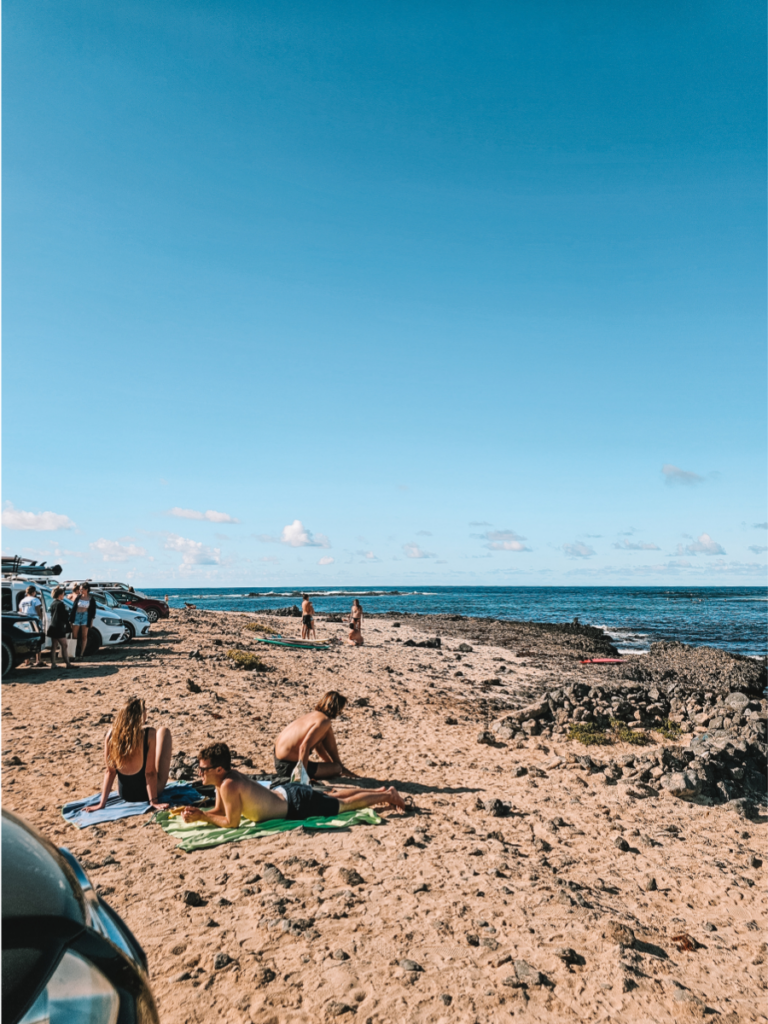
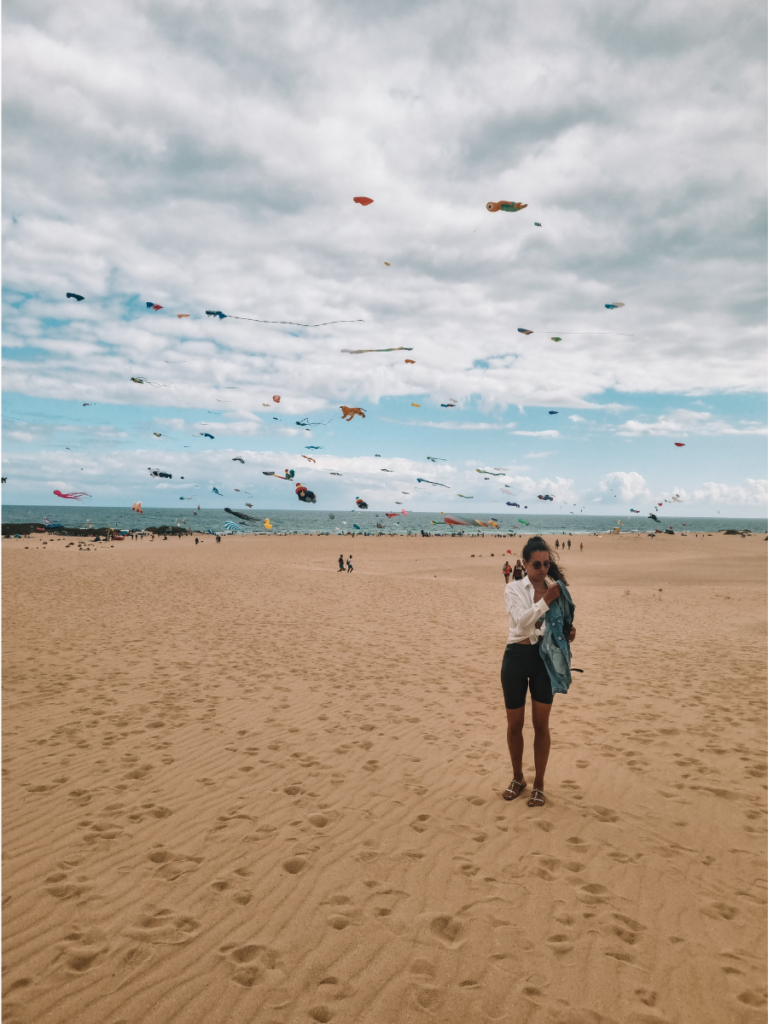
After a morning surf session, treat yourself to a delicious pastry at El Goloso in Lajares or Pastelo. For a hearty breakfast, head to Corralejo’s harbor café, La Ola. During the day, you can explore the island’s volcanic landscapes, relax on the beach, or visit other parts of the island, such as Costa Calma in the south.
If you’re taking a break from surfing, consider a day trip to Lanzarote or practice your technique at Corralejo’s large skate park with a surfskate. Camper travelers often gather along the North Shore, enjoying breakfast by their vans after a surf session, soaking up the island’s unique atmosphere – a great way to make new friends.
Though Fuerteventura’s landscape may seem barren at first glance, it has a certain charm, reminiscent of a moon-like terrain. The simplicity of strolling through Corralejo’s streets, savoring a glass of wine and some tapas in a cozy bar, and enjoying live music in the evening captures the island’s relaxed vibe.
The options may seem limited, but there is still plenty to do. In my case, I love strolling the streets of Corralejo, enjoying a glass of vino in one of the many lovely bars, eating some tapas and maybe listening to some live music afterwards.
7. A Surf Trip for All Ages
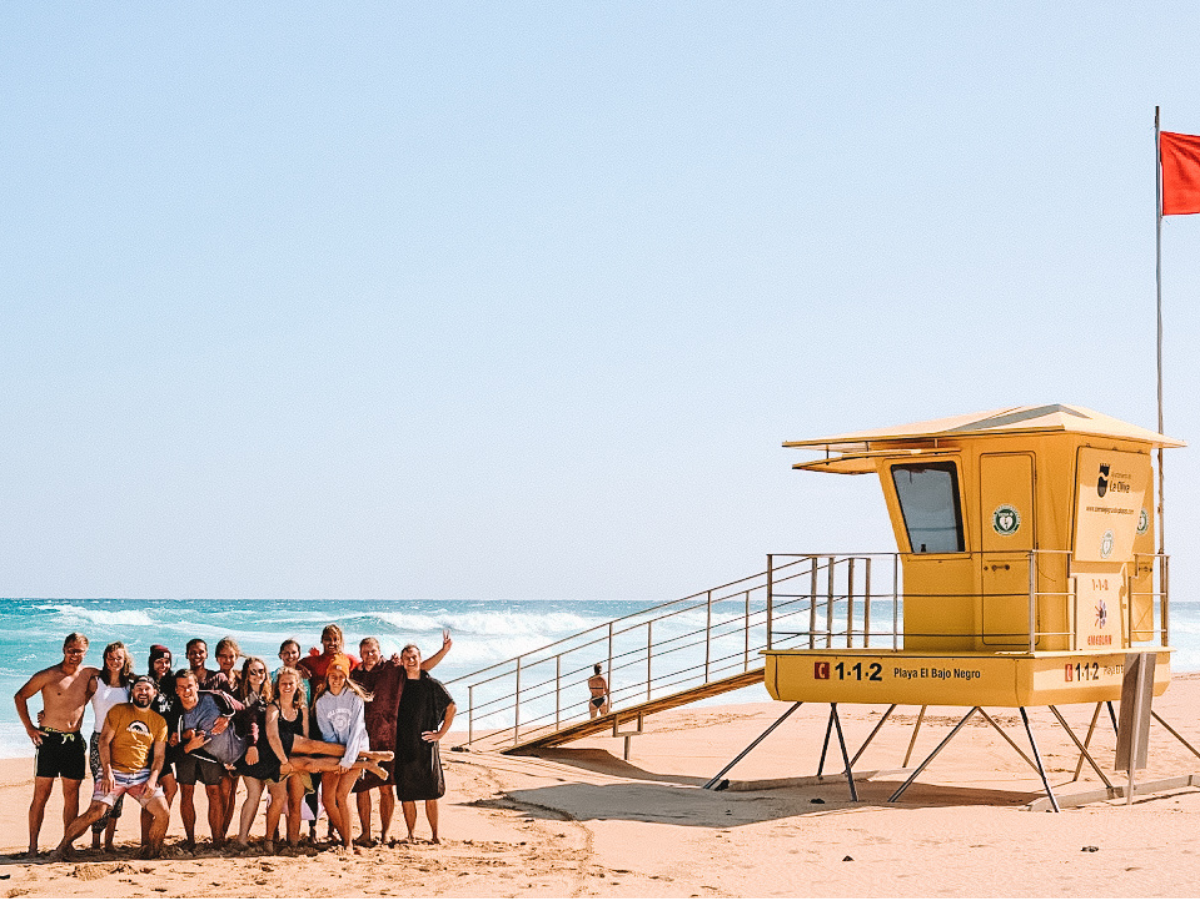
Whether you’re traveling as a family, a couple, with friends, or solo, surfing in Fuerteventura offers something for everyone. Families can rent a beachside apartment or villa and book surf lessons separately with a guide. I highly recommend AMPED Surf – Patrick is an experienced and fantastic instructor who teaches in both German and English, catering to all surf levels!
If you’re traveling with your partner or in a group, you can either rent shared accommodations and book private group lessons or join a surf camp to embrace the complete surfer lifestyle with an all-inclusive experience.
For solo travelers, surf camps are ideal. They’re perfect for meeting like-minded people, making new friends, and receiving all the support you need – from gear to guidance on the best surf spots.
Conclusion
Fuerteventura has earned a special place in my surfer heart. The variety of surf spots catering to all levels, all within close proximity, is unparalleled.
Beyond surfing, the island’s laid-back atmosphere offers plenty of opportunities to enjoy the sunshine, indulge in culinary delights, or try other activities. Corralejo and its surroundings continue to expand their offerings of shops, cafés, and restaurants, ensuring there’s always something to do. Whether you’re traveling solo, as a couple, or in a group, Fuerteventura is easy to reach and budget-friendly. With surf camps, cozy cafés, and the welcoming surfer vibe of the North Shore, it’s easy to feel at home and connect with others.
If you’re looking for your next destination with world-class waves and amazing weather, put surfing in Fuerteventura at the top of your list. The island won’t disappoint – and who knows, it might just steal your heart too.



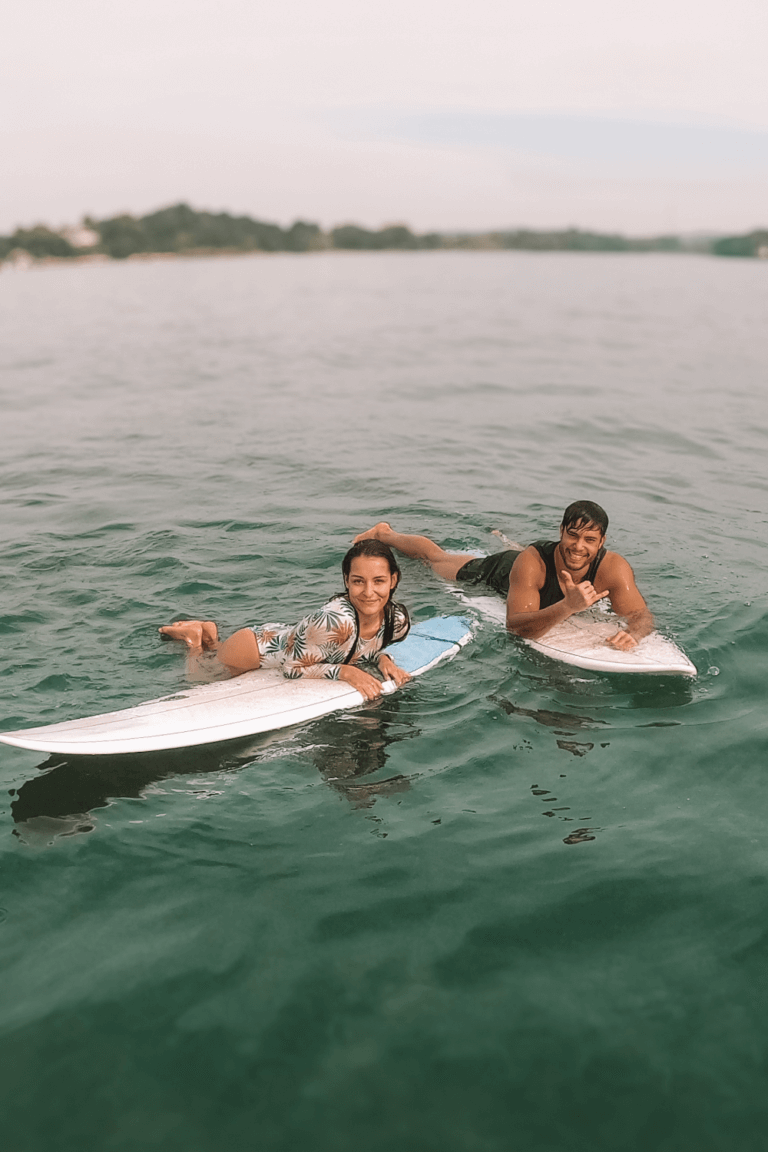
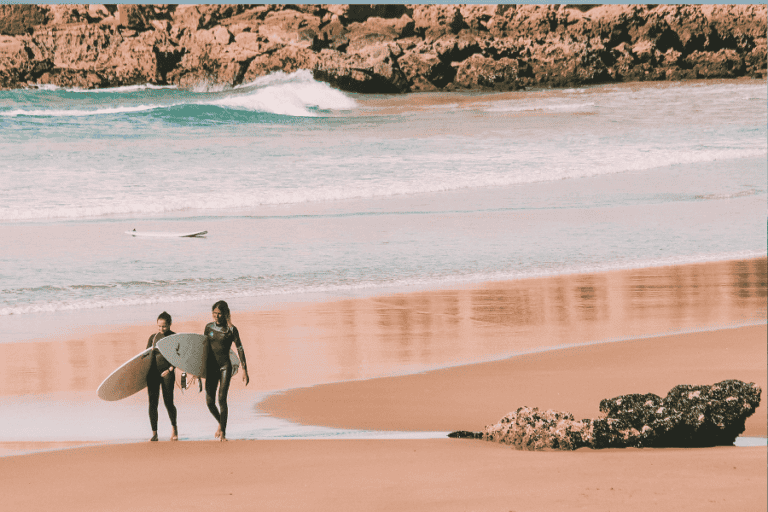
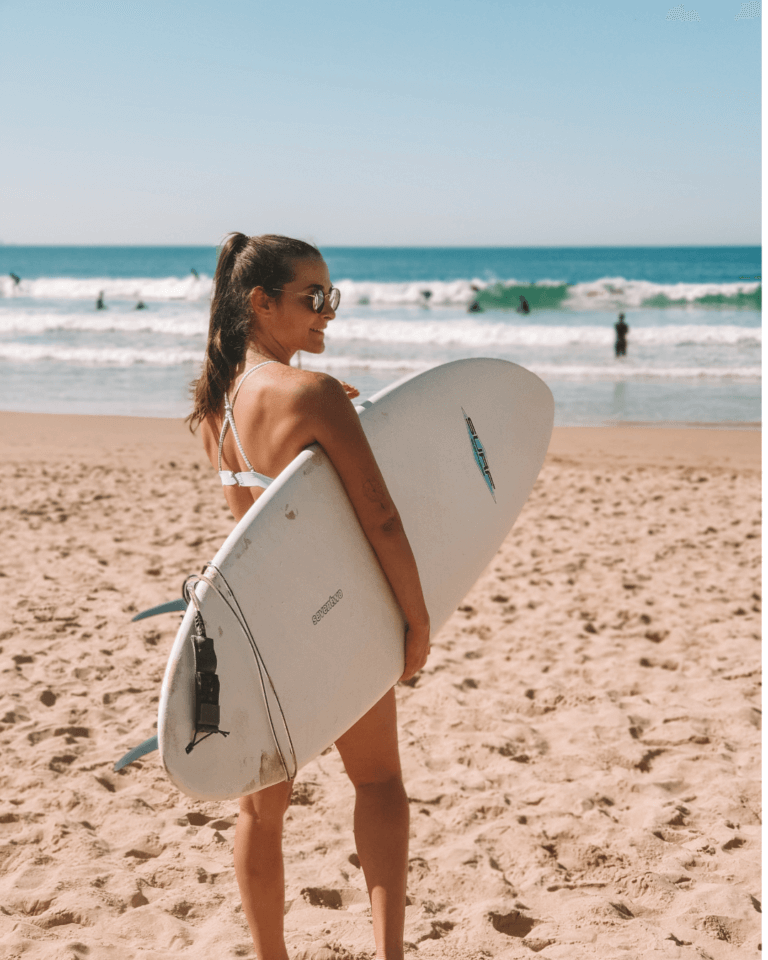

I really appreciate this post. I’ve been looking everywhere for this! Thank goodness I found it on Bing. You’ve made my day! Thanks again!